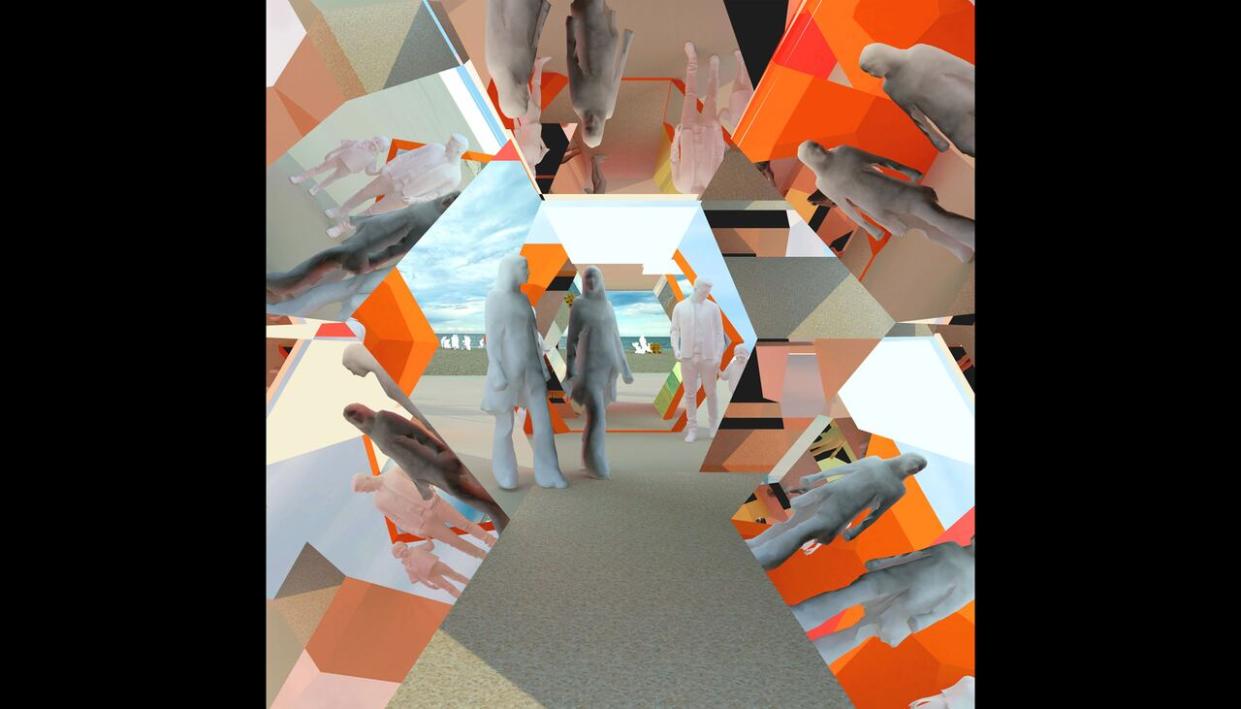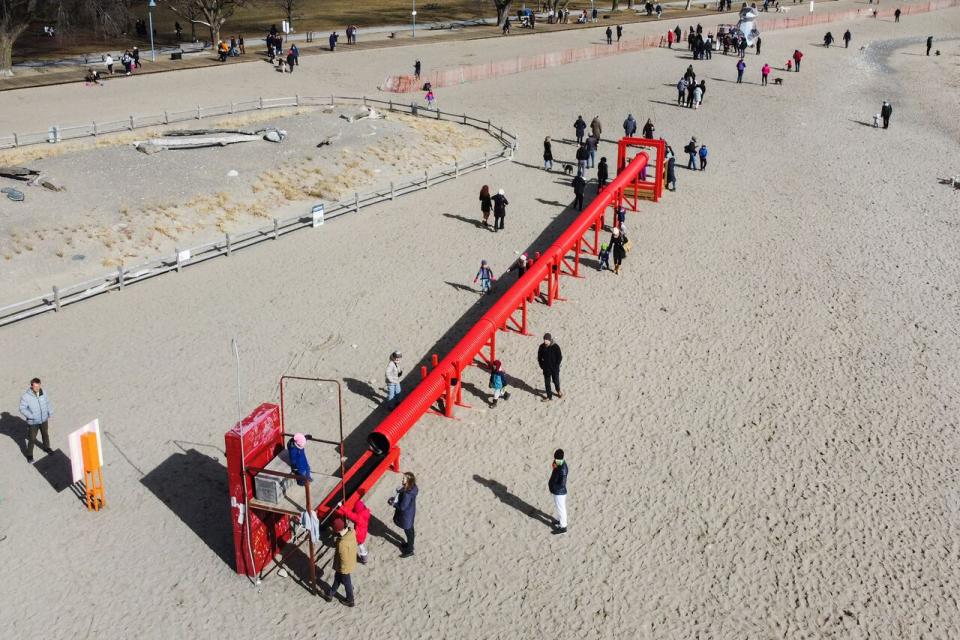Toronto's Winter Stations are a sight to behold, but disability advocates say they're far from accessible

Every year, Beate Hundert says she tries to view the art exhibits part of Winter Stations along Woodbine Beach. And each time, she says she's robbed of the experience.
Instead of getting to view each station up close, Hundert says she can only go as far as the boardwalk allows.
Hundert uses a walker to get around because of a condition called hereditary spastic paraplegia, which affects how her muscles function. That, coupled with the snowy and often icy terrain, means she can't experience the exhibit the way it's intended.
"It makes a big difference because you just don't enjoy it in the same way," said Hundert, 68.
"You try not to get depressed."
According to one local community organization, she isn't alone. Toronto Lakefront Community says the issue of beach accessibility, both at Woodbine Beach and beyond, has been on its radar for the past couple of years. It says locals have reported difficulty accessing the waterfront, not only during community events like Winter Stations, but throughout the year.
"We have to include everybody," said the group's co-founder Jane Anderson. "Solutions are readily available, and that's the thing that really bothers me."
Mobility mats as a solution
The Winter Stations is an international design and art competition that brings temporary art installations to Toronto's east end beaches for the winter. This year, the event runs from Feb. 19 to the end of March.
Anderson points to mobility mats used at other beaches like Wasaga, where portable rollout mats laid on the beach provide a continuous pathway for pedestrians, people using wheelchairs and visitors with strollers or bicycles.
The town also offers all-terrain and water-accessible wheelchairs for rent. And while Toronto has its own beach wheelchair service, the aren't enough to meet demand, she said.

Jane Anderson is the co-founder of the advocacy group Toronto Lakefront Community, which represents residents of Scarborough-Southwest and Beaches-East York. (Submitted by Jane Anderson)
"There's a strong commitment to accessibility, but I think in practice ... we're not there," said Anderson, adding she's spoken to Winter Stations organizers and the ward's elected officials for help.
"When you look at other municipalities, they've done a much better job."
In an effort to address the problem, Winter Stations head organizer Dakota Wares-Tani said new installations along Queen Street East at Woodbine Park, Kew Gardens and Ivan Forrest Gardens will help increase access to exhibits for those who can't make it across the beach.
In the 10 years the event has run, the change is a step forward in addressing a long-term issue that the non-profit organization alone can't fix, she said. Rough quotes for mobility mats for the event were in the tens of thousands of dollars, making up more than half their funding, she added.
"From the beginning, accessibility wasn't possible because the beach itself isn't inherently accessible," said Wares-Tani, who's also an architect at architecture firm RAW Design, one of the firms that launched the event.
Under the province's overarching disability legislation, the Accessibility for Ontarians with Disabilities Act, pathways to the beach's edge and boardwalks must be accessible for everyone.

Life Line, one of the art exhibits shown at the Winter Stations 2023 event at Woodbine Beach. There are no mobility mats between each station for people with mobility limitations or disabilities to travel between exhibits, meaning some viewers are stuck on the beach's boardwalk. (Winter Stations)
City looking into how to make beaches more accessible
In an email to CBC Toronto, the city said it strives to reach compliance wherever "operationally feasible," and that Woodbine Beach has sand mats that extend to the water's edge.
"Staff continue to investigate opportunities to increase accessibility in our parks and beaches," the email reads.
City staff for Coun. Brad Bradford, who represents Beaches-East York, said in an email to CBC Toronto that residents flagged the issue to them last year.
"Our office has also had ongoing conversations with community advocates and City Parks, Forestry and Recreation staff about increasing year-round accessibility at Woodbine Beach, and other beaches in our ward," Bradford's office said in an email.
"Actions to date have included installing additional accessible picnic tables, work to standardize signage and tactile surface indicators, and designing safer intersection crossings."
Hundert said she hopes that no matter what gets put in place, it's important for everyone to feel included, especially when solutions have been proven to work elsewhere.
"It can absolutely be done," she said.

